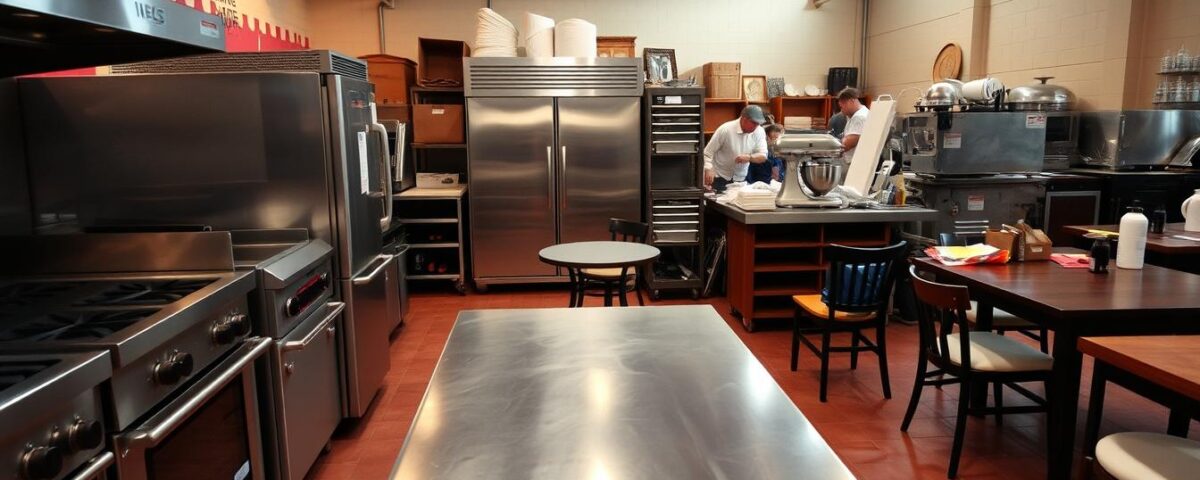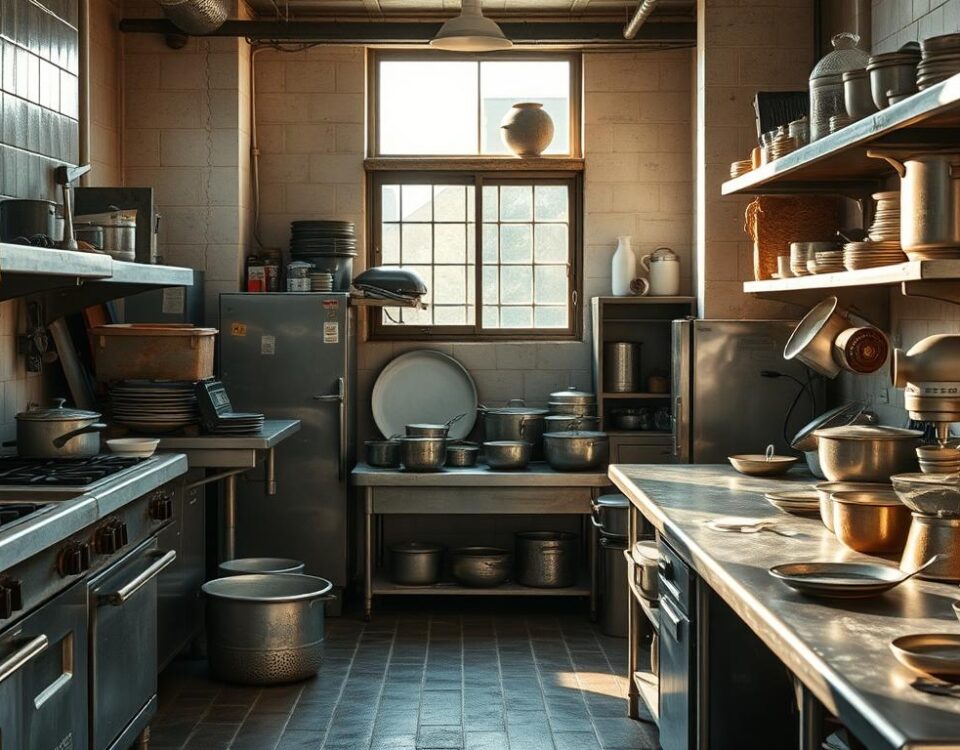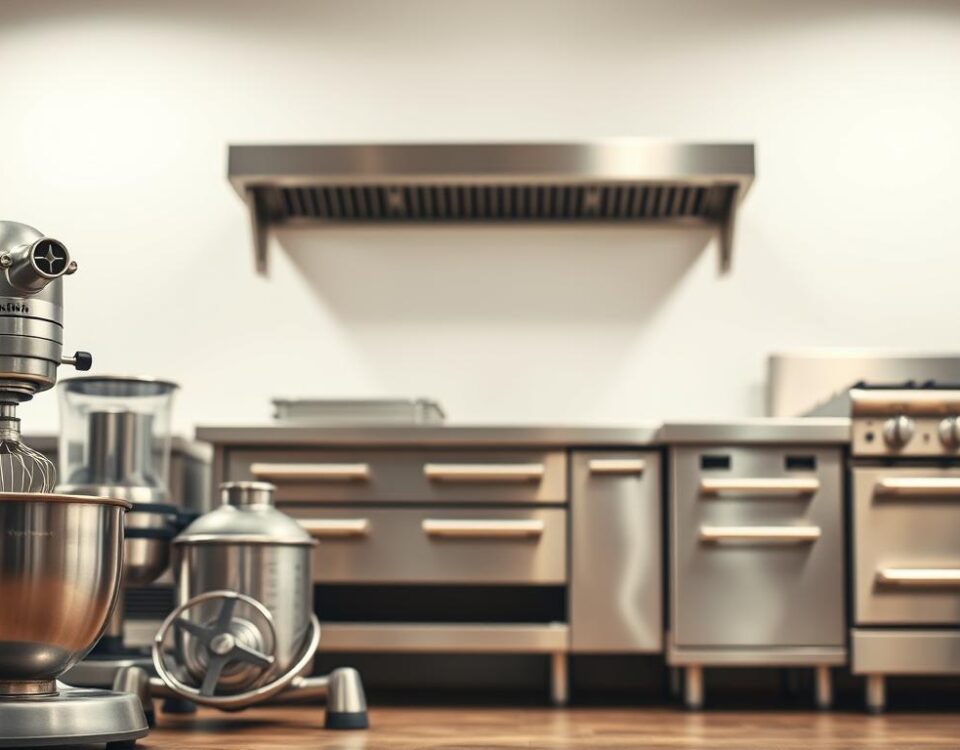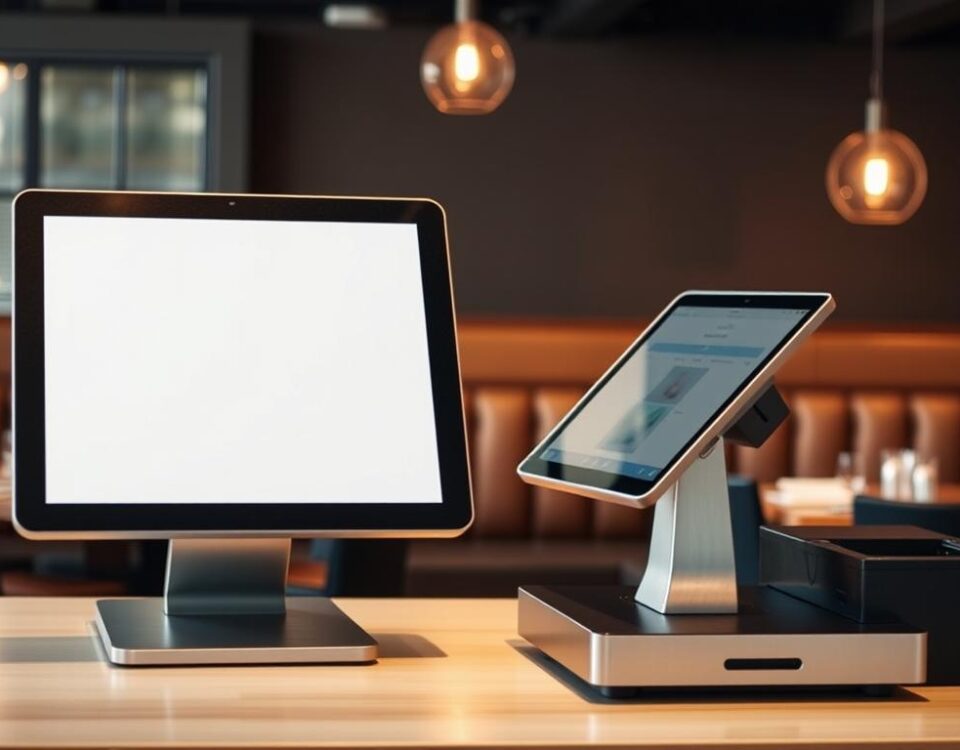
I Tried Buying Used Restaurant Equipment—Here Are the Results
October 3, 2025Opening a restaurant can be a costly venture, with average startup costs ranging from $175,500 to $750,500. Overspending on equipment can lead to financial hardship, and with about 17% of restaurants failing in the first year, it’s crucial to make cost-effective decisions.
Restaurant auctions offer a viable solution, providing significant savings on high-quality equipment. By participating in an auction, you can acquire the necessary items at a fraction of the retail price.
Imagine furnishing your restaurant with top-notch kitchen appliances and front-of-house furnishings without breaking the bank. With the right knowledge, you can navigate the world of restaurant auctions and make informed buying decisions.
Key Takeaways
- Discover how restaurant auctions can save you thousands of dollars on essential equipment.
- Learn about the different types of auction formats, including liquidation and consignment auctions.
- Understand the benefits of purchasing through auctions, including cost savings and quick acquisition timelines.
- Explore the variety of equipment available at restaurant auctions, from commercial kitchen appliances to front-of-house furnishings.
- Get an overview of what to expect at a restaurant auction and how to navigate the process successfully.
Why Restaurant Auctions Are a Smart Investment
Investing in restaurant auctions can be a game-changer for new restaurant owners looking to save on startup costs. Restaurant equipment auctions offer a unique opportunity to acquire high-quality equipment at significantly lower prices than retail.
Significant Cost Savings Compared to Retail
One of the most significant advantages of restaurant auctions is the potential for substantial cost savings. High-priced items like commercial stove top ranges, prep tables, storage units, and sinks can cost thousands of dollars at retail. However, bidding on used equipment at an auction can result in significant savings. For instance, a Vulcan 10-range burner that could cost over $10,000 new was sold for $675 at a recent auction. This represents a savings of over 93%.
| Equipment | Retail Price | Auction Price | Savings |
|---|---|---|---|
| Commercial Stove Top Range | $10,000+ | $675 | 93% |
| Prep Tables | $2,000-$5,000 | $300-$1,000 | 50-80% |
Quality Equipment Built to Last
Restaurant equipment is built to withstand heavy use, making even used items a worthwhile investment. Commercial-grade equipment is designed for durability and longevity, offering superior performance and reliability compared to residential alternatives. By purchasing quality used equipment at an auction, restaurant owners can allocate more of their startup capital toward other critical business needs like marketing, staffing, and inventory.
Restaurant auctions often feature equipment from high-end establishments that have closed for reasons unrelated to equipment quality. This means that buyers can acquire top-notch equipment at a fraction of the cost of new items. By doing so, they can enjoy significant cost savings while still obtaining the quality equipment they need to run a successful business.
Understanding the Restaurant Auction Process
Navigating the world of restaurant auctions can be complex, but understanding the process is key to making informed purchasing decisions. Restaurant equipment ends up at an auction in one of two ways: consignment or liquidation.
Types of Restaurant Auctions: Consignment vs. Liquidation
Some restaurants may consign their equipment to auction if they’re upgrading their kitchen or need to move old inventory. In other cases, a restaurant may decide to close down, resulting in a liquidation auction that includes the entire contents of the restaurant. The fundamental difference between these two types is crucial for buyers to understand, as it affects the variety and condition of equipment available.
How Online and In-Person Auctions Work
Online auctions provide a platform where buyers can browse listings, filter items, and track auctions of interest. Bidding typically occurs over a specified timeframe, with bids incrementally increasing until the auction’s conclusion. In contrast, in-person auctions require registration, preview periods, and immediate bidding. Understanding these processes helps buyers choose the format that best suits their needs.
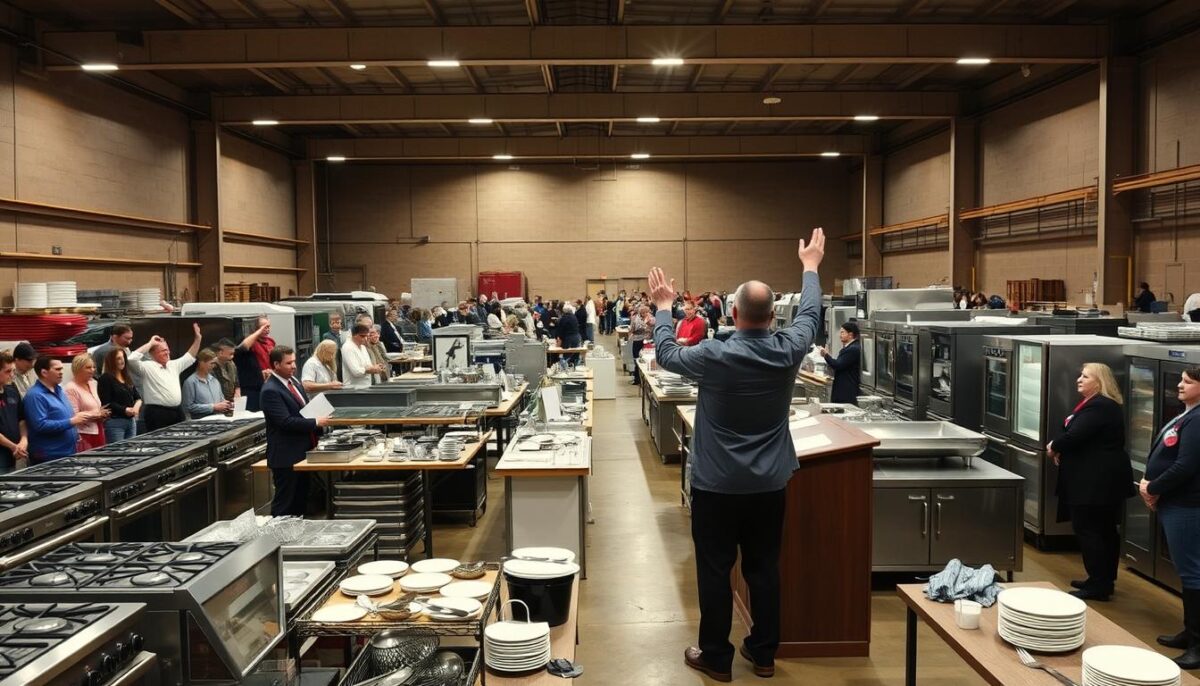
Payment, Fees, and Logistics to Consider
Buyers must be aware of the various fees associated with auctions, including buyer’s premiums (typically 10-18% of the hammer price), payment processing fees, and potential storage fees. Payment options typically accepted at restaurant auctions include credit cards, wire transfers, and cashier’s checks. Additionally, logistics considerations such as item removal deadlines and transportation requirements for large equipment are crucial to consider.
- Buyer’s premiums range from 10-18% of the hammer price.
- Payment options include credit cards, wire transfers, and cashier’s checks.
- Logistics considerations include item removal deadlines and transportation requirements.
By understanding these aspects of the restaurant auction process, buyers can better navigate the complexities and make informed decisions.
Essential Equipment Available at Restaurant Auctions
Restaurant auctions are a treasure trove for those looking to acquire quality equipment at discounted prices. Whether you’re opening a new restaurant or upgrading your existing facilities, you’ll find a wide range of equipment to suit your needs.
Commercial Kitchen Equipment
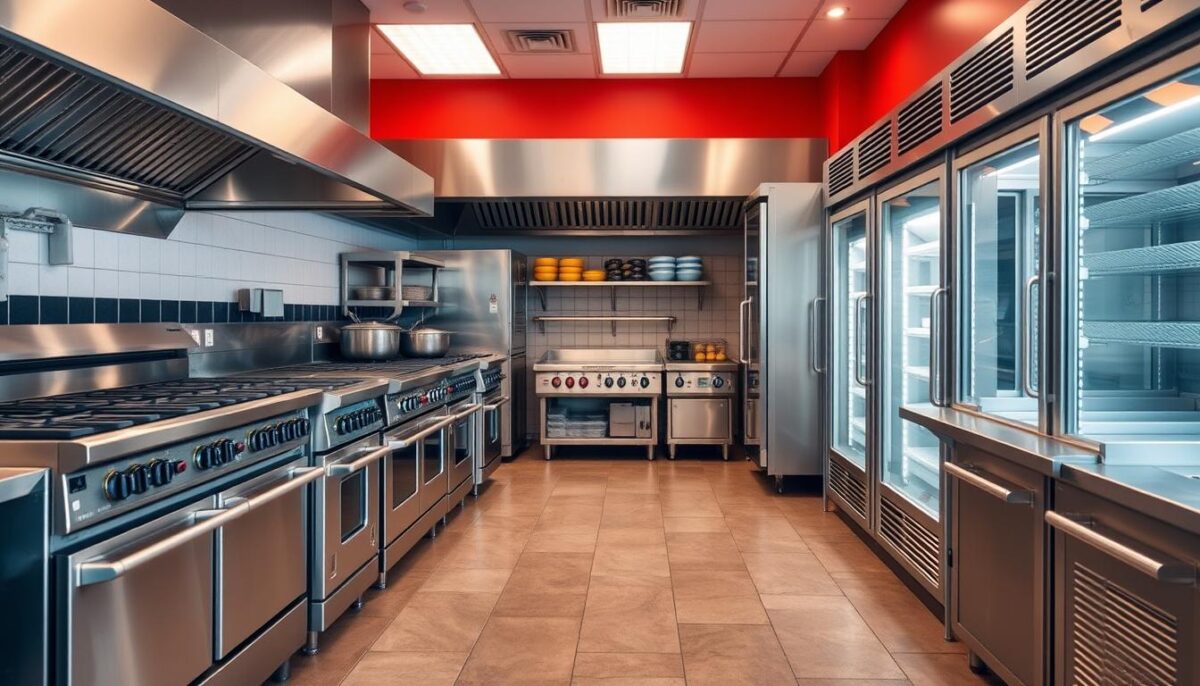
Commercial kitchen equipment is a crucial component of any restaurant. At auctions, you can find high-quality cooking equipment, refrigeration units, and food preparation machinery. This includes gas and electric ranges, ovens, walk-in coolers and freezers, deep fryers, and large cooktop griddles.
Furniture and Front-of-House Items
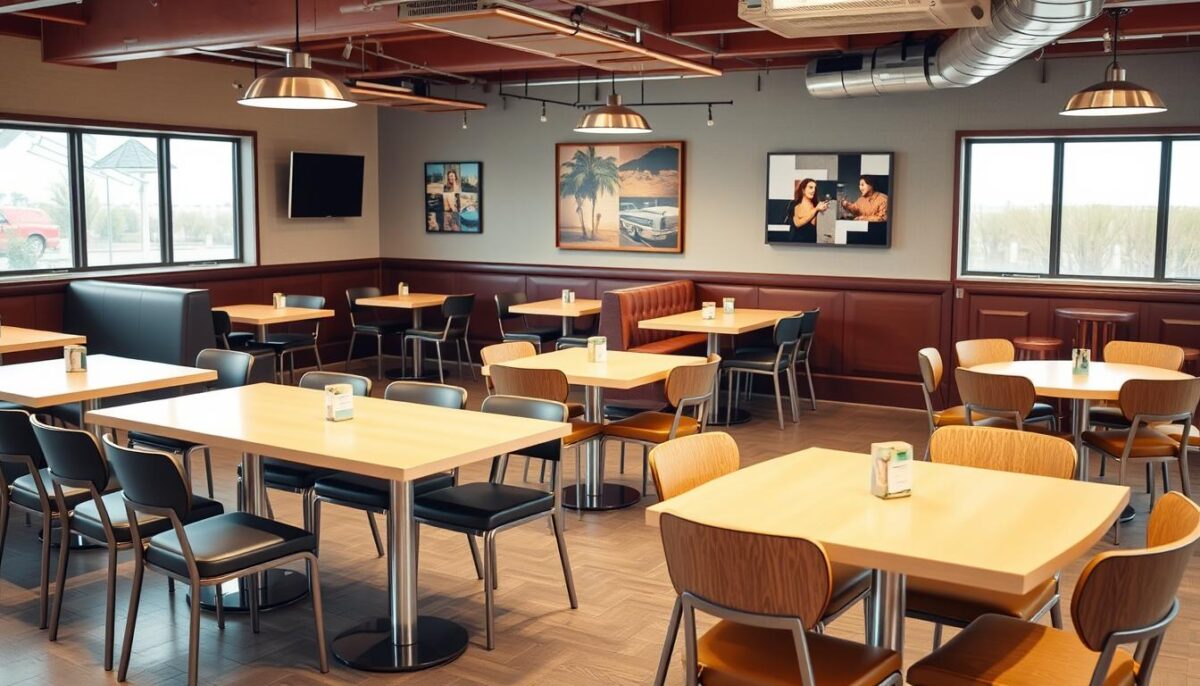
Creating a welcoming atmosphere is essential for any restaurant. At auctions, you can find a variety of furniture and front-of-house items, including dining furniture, bar equipment, serving stations, host stands, and décor elements.
Kitchen Utensils and Cookware
Kitchen utensils and cookware are essential for food preparation. At auctions, you can find a vast array of kitchen utensils, smallwares, and cookware, including silverware, cutlery, plates, bowls, serving platters, warming trays, cups, glasses, blenders, food processors, mixing bowls, whisks, spatulas, ladles, and tongs.
Storage and Safety Equipment
Storage and safety equipment are critical components of any restaurant. At auctions, you can find shelving units, food storage containers, fire suppression systems, first aid kits, security equipment, and other essential safety items required for restaurant operation.
Complete Restaurant Auction Buying Guide: Step by Step
Navigating a restaurant auction requires a strategic approach to secure the best deals on quality equipment. To make the most of this opportunity, it’s essential to be well-prepared and informed throughout the process.
Research and Planning Before the Auction
Before participating in an auction, research the equipment included and use the manufacturer’s website content to supplement the information provided on the auction site. Identify your equipment needs, research the market values of used equipment, and create a prioritized shopping list to stay focused during the auction.
Setting a Realistic Budget
Establish a clear budget before entering an auction, keeping in mind additional fees such as taxes, shipping, and buyer’s premiums. Factor in transportation costs, installation expenses, and potential repair needs to ensure you’re prepared for the total cost of your purchases.
Inspecting Equipment and Asking Questions
While most items listed in online auctions are in good condition, it’s crucial to inspect the equipment thoroughly before placing a bid. During preview periods, look for signs of wear, test functionality when possible, and ask auction staff about equipment history, maintenance records, age, and operational status.
Bidding Strategies for Success
To succeed in both online and in-person auctions, employ effective bidding strategies such as timing your bids, setting maximum bid limits, and using proxy bidding effectively. Keep a close eye on auction activity, including bidding activity, bid increments, and auction end times, to make informed decisions and avoid getting caught in bidding wars.
By following these steps and staying organized, you can navigate restaurant auctions with confidence and secure the equipment you need at a great value.
Common Pitfalls to Avoid When Buying at Restaurant Auctions
Successful bidding at restaurant auctions requires more than just a good eye for deals; it demands a thorough understanding of the process and its potential pitfalls. To navigate these auctions effectively, buyers must be aware of several key factors that can significantly impact their purchasing decisions and overall experience.
Getting Caught in Bidding Wars
One of the most significant risks at restaurant auctions is getting caught up in bidding wars, which can lead to overpaying for equipment. To avoid this, it’s essential to set a firm budget and stick to it, regardless of the bidding intensity. Understanding the psychology behind bidding wars can help you stay focused on your financial limits.
Overlooking Equipment Condition and Age
Failing to thoroughly inspect equipment before bidding is another common mistake. Buyers should pay close attention to the condition and age of the equipment, looking for signs of wear, maintenance records, and any potential for future issues. This due diligence can save you from costly surprises down the line.
Forgetting About Transportation and Installation Costs
Many buyers overlook the additional costs associated with transporting and installing new equipment. It’s crucial to factor in these expenses, including specialized moving services and potential building modifications, to get a true picture of the total investment.
Neglecting to Research Market Value
Not researching the market value of equipment before bidding can result in overpaying. Using resources like price comparisons and valuation guides can help you make informed decisions and avoid financial pitfalls.
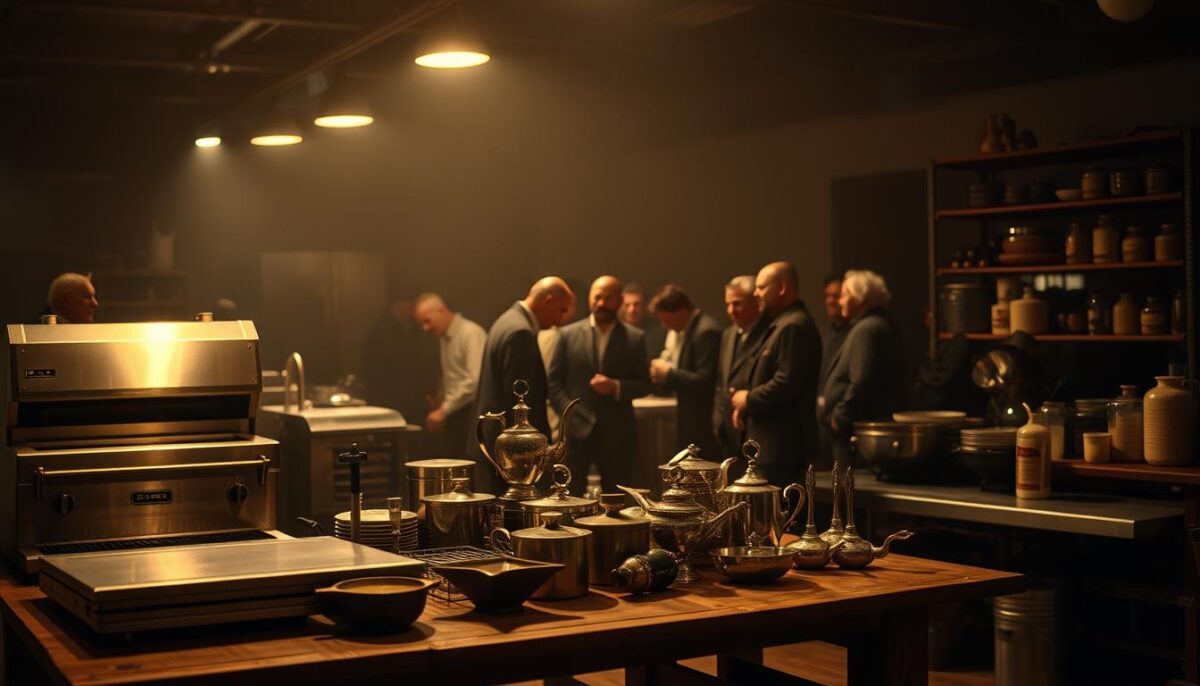
By being aware of these common pitfalls and taking steps to avoid them, buyers can navigate restaurant auctions with confidence, securing great deals on quality equipment.
Conclusion: Maximizing Your Restaurant Auction Experience
As we’ve explored throughout this guide, restaurant auctions can be a game-changer for culinary businesses looking to elevate their operations. By understanding the auction process and leveraging its benefits, you can secure the equipment you need to drive business success.
The key benefits of purchasing restaurant equipment through auctions include significant cost savings, access to commercial-grade equipment, and the ability to fully equip a restaurant quickly. To succeed, it’s crucial to balance quality, price, and functionality when making auction purchasing decisions.
By being patient, persistent, and informed, you can navigate online auctions and auction houses with confidence, making smart investments that will benefit your business for years to come. This approach not only saves money but also represents a sustainable way to procure equipment, reducing waste and giving quality items a second life.
FAQ
What types of equipment can I expect to find at a restaurant equipment auction?
You can expect to find a wide range of equipment, including commercial kitchen appliances like ovens and refrigerators, furniture, and front-of-house items like tables and chairs. Additionally, you may find kitchen utensils, cookware, and storage and safety equipment.
How do I research the market value of the equipment I’m interested in?
I recommend researching the market value of the equipment by checking online marketplaces, industry reports, and consulting with experts in the field. This will help you make an informed decision and avoid overpaying for the equipment.
What are the benefits of attending an online auction versus an in-person auction?
Online auctions offer the convenience of bidding from anywhere, at any time, while in-person auctions provide the opportunity to inspect the equipment before bidding. Both options have their advantages, and it’s up to you to decide which one works best for your needs.
How do I inspect equipment before bidding, and what should I look for?
When inspecting equipment, I look for signs of wear and tear, check for any damage or needed repairs, and verify that it’s in working condition. It’s also essential to ask the auctioneer or seller about the equipment’s history, maintenance, and any existing issues.
What are some common fees associated with restaurant equipment auctions?
Some common fees include buyer’s premiums, sales taxes, and payment processing fees. It’s crucial to factor these costs into your budget to avoid any surprises.
How do I ensure that I’m getting a good deal on the equipment I want?
To get a good deal, I set a realistic budget, research the market value of the equipment, and bid strategically. It’s also essential to consider the equipment’s condition, age, and any additional costs, such as transportation and installation.
